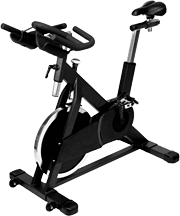Back to Basics: Understanding Back Pain
Despite the amount of information available on the Internet these days, many people still do not have the proper facts on back pain. Perhaps it’s due to information overload or just misinformation.
Regardless of the reason, there are too many people suffering from back pain and not enough understanding of the causes and potential solutions. Let’s try and change that by looking at the basics of back pain.
First, understand that back pain is not due to one and only one cause. That would make everyone’s job so much easier. Just imagine going to your car mechanic and knowing anything and everything that might be wrong with your car had only one cause. Life would be so much easier that way, but it’s just not the case. Back pain is no different. It can be caused by a multitude of things involving bones, muscles, nerves or even psychological factors.
Second, many people with chronic pain think their back pain will never go away. Considering that chronic low back pain costs society up to $100 billion a year in health care utilization, workers’ compensation, etc., it’s hard to imagine that most of the back pain out there actually gets better, but surprisingly, it usually does. But if that’s the case, then why is low back pain such an epidemic?
For a long time (and in some cases even today), patients and health professionals alike had similar views regarding back pain. When you came into the office, the priorities were to find out what was wrong, where the pain was coming from, and then address the structure (part of your body) that needed addressing. That’s it. Sounds straightforward, but this is actually the wrong way to look at back pain.
For example, a person with leg numbness may go get an MRI done, and it may show that they have a “disc bulge” at L5 (the fifth lumbar vertebra in the back). Believing that L5 is causing the person’s leg numbness, more often than not, a surgeon would go in and operate on that L5. However, did you know that some people who have no back pain can also have a disc bulge at that level showing on the MRI? What this means is that what you see on an imaging test is not necessarily where the pain is coming from.
Let’s divide low back pain into two different conditions and discuss the general facts about how to deal with each one. We call low back pain that is quite recent acute low back pain. This can range from pain that is present for several minutes to several days. The second category of back pain is chronic low back pain. This pain persists for three months or more.
ACUTE LOW BACK PAIN: Early treatment leads to better outcomes
If you’ve suffered from low back pain over the past few days, or if you get back pain sometime in the future, the tendency will be to wait it out and see if it gets better. Sometimes we even decide to take time off and lie in bed, hoping we will eventually be feeling better and back to our usual activities or work. However, more and more research shows that lying in bed or waiting it out is the worst thing you can do for yourself. Remember, only 10 percent of people develop chronic low back pain, but those cases account for an estimated $100 billion a year in health care and other costs. It’s a safe bet that most of them have taken this incorrect “wait and see” approach.
Research suggests that when it comes to back pain, early intervention is best. There are many reasons for this concept, but here is a basic summary of what current guidelines are saying:
-
- Low back pain can sometimes be due to something more serious than a simple sprain. That’s why it’s important to see your chiropractor right away so they can evaluate you for anything more serious.
-
- Spinal manipulation is one of the only treatments that is consistently being recommended for those with acute low back pain – and yet far too many people don’t visit a chiropractor and choose to pop over-the-counter pain medication instead.
-
- Avoid bed rest as much as possible. Yes, I know that it feels good and frankly, when I had an episode of low back pain once, I was tempted to lie in bed all day, too. On a basic level, it’s the most “rational” thing to do. However, bed rest actually wastes away your muscles, and this effect lasts even for the lucky ones who improve with their low back pain. For those who are pain free, the bad news is that the muscles still waste away.What does this mean? It means that although you may be lucky enough to be out of pain, your muscles will have put you in a position where you will most likely suffer back pain again. That’s why trying to stay as active as possible in the early stages can go a long way not only to get over the back pain, but also to help prevent future back pain episodes from happening.
Early exercise will help ensure that your muscles and bones will continue to move to prevent stiffness and pain. I often have patients tell me that they have Googled an exercise program for their back pain and are using it. Unfortunately, there is no-one-size-fits-all exercise program for low back pain. The type of exercises you do for a disc herniation can be totally different than the ones you do for a simple strain or sprain caused by playing a sport or lifting something at work. In fact, some exercises that you may see posted on the Internet may actually cause further damage or prolong your back pain. That’s why it’s so important to see your health professional to get an expert opinion on which exercises will be beneficial for your condition.
- Avoid bed rest as much as possible. Yes, I know that it feels good and frankly, when I had an episode of low back pain once, I was tempted to lie in bed all day, too. On a basic level, it’s the most “rational” thing to do. However, bed rest actually wastes away your muscles, and this effect lasts even for the lucky ones who improve with their low back pain. For those who are pain free, the bad news is that the muscles still waste away.What does this mean? It means that although you may be lucky enough to be out of pain, your muscles will have put you in a position where you will most likely suffer back pain again. That’s why trying to stay as active as possible in the early stages can go a long way not only to get over the back pain, but also to help prevent future back pain episodes from happening.
- There are ways to predict if acute pain will end up developing into chronic pain. One of the most frustrating things health professionals face is the fact that although some patients may have undergone treatments, they still develop chronic low back pain. The good news is that there are certain predictors that can identify someone who may end up developing chronic back pain. When you look at these, it becomes more apparent that seeking treatment and following all the above points is crucial to getting better. One of the biggest predictors is called “pain avoidance behavior.” Quite simply, it means once you get the pain, you will do everything you can to avoid anything that will cause pain.
What happens next? You guessed it. This type of person lies in bed as much as possible. This type of person will try to avoid any exercise that may cause the slightest discomfort. Essentially, they will avoid everything that could be helpful to their condition. That’s why I always take time with my patients to stress the importance of not letting the pain overtake their lives. Continue doing what you did before, no matter how small of an effort you put in. The back pain feels like your back is going to break in two. However, with proper supervision and the right recommendations for treatment, you will not be able to damage your back any more than the situation it is in.
So, the next time you experience back pain and feel like you can’t do anything, always remember that any movement or activity or treatment that keeps you moving is crucial for your recovery. Another factor is that you may be deconditioned and not fit enough. With back pain, you can become even more deconditioned. That’s why starting to move and then progressing to an exercise program is crucial to ensure not only that you get better, but also that you don’t get future bouts of low back pain.
CHRONIC LOW BACK PAIN: Focus on strengthening and endurance exercises
Chronic low back pain is pain that has been persistent for more than three months. Most of my patients have either tried different therapies with no results, or have decided to use the “wait and see” approach that we just discussed. Regardless of how you got here, there are several key things to remember about your back pain if it’s chronic:
Most back pain does not require surgery. Some of my patients with chronic pain are always looking for the surgical solution. Who wouldn’t? We all will believe that if someone just takes what is causing the pain “out,” everything will be fine. Unfortunately, surgery doesn’t have a stellar track record of finding a cure for your chronic back pain. Most surgeons I know and work with will tell me straight out that it’s the last option for the patient. For example, some of my disc herniation patients with nerve root problems may feel like surgery is the only option, but then are surprised when the surgeon holds off. One thing you have to realize is that surgeons will only do surgery if there is physical damage occurring to the nerves that are causing muscle wasting and will lead to irreversible damage. Pain is not a criteria for surgery!
Begin an exercise program to increase strength and endurance. Most of my patients will chronic low back pain tell me they have done exercises, but they haven’t worked. I then see what they’ve done and realize it isn’t enough.
To someone with chronic low back pain, it appears to be more than enough simply because any more will cause pain! However, you need to see yourself not as a crippled patient, but as an athlete coming back from injury. We are always mesmerized by how fast some athletes get back from surgery or get back from their injuries. That’s because they push themselves through appropriate exercises.
The body has a wonderful ability to get stronger when exercise stresses are placed on it. The body can bend, but usually doesn’t break. That’s why an effective exercise program should not be based on simple stretches alone. Exercises need to progress to strengthening and endurance exercises. Endurance is how long your back (or any area of the body) can sustain an activity before it gets tired and unable to function. Therefore, endurance exercises are the key to gradually work your back into shape. It’s also important to exercise your whole body, not just your back. Having strong legs will help you get up easier. Having a strong upper back and arms will allow you to carry things easier.
Remember, one of the best predictors of low back pain becoming chronic is pain avoidance behavior. By committing yourself to a life of avoiding things that give you pain, you are going to go into that vicious cycle of pain and disability. That’s why following your health professional’s advice on the right exercises is crucial to ensuring you get your life back instead of losing it to back pain.
As you can tell, the back is a complex structure and back pain can be just as complex, but at the same time, there are straightforward ways to reduce your risk of experiencing acute or chronic episodes. Talk to your doctor for more information.
THE GOOD NEWS:
90% of people with low back pain will recover in four to six weeks.
THE BAD NEWS:
10% of people develop chronic low back pain, an epidemic that costs society up to $100 billion a year.
THE GOOD NEWS:
Spinal manipulation is one of the only treatments consistently recommended for dealing with acute low back pain.
THE BAD NEWS:
Far too many people don’t visit a chiropractor for their pain and instead choose to pop over-the-counter pain medication at alarming rates.
THE GOOD NEWS:
While bed rest may seem like the rational thing to do when in pain, evidence suggests proper exercises to increase mobility and reduce loss of muscle strength are key to recovery.
THE BAD NEWS:
One of the biggest predictors of chronic back pain is called “pain avoidance behavior,” which means once you get the pain, you do everything you can to avoid anything that will cause pain.





